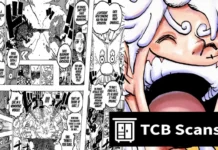As the job market becomes increasingly competitive, your cover letter is more important than ever. A strong CL can make the difference between getting your foot in the door and being passed over.
The good thing is, writing an impressive CL doesn’t have to be complicated. Follow these simple tips, and you’ll be on your way to writing a cover letter to help you get the job you want.
Contents
Definition & purpose
A CL is a document sent alongside your resume when applying for jobs. Its purpose is to provide additional information on your skills and experience and to explain why you are qualified for the position you are applying for.
In your cover letter, you should briefly mention your most relevant skills and experiences and explain how these qualify you for the applied post. You should also explain why you are interested in the position and how you would be an asset to the brand.
The different types of cover letters
Different types of cover letters include:
- Application letters. It is a formal letter you write to apply for a job. It should include your qualifications, skills, experience, and reasons for applying for the post.
- Networking letters. It is a letter to ask someone for information or advice about a job. It should include a description of your prowess and reasons for seeking the person’s advice.
- Targeted letters. It is a piece you write to a specific person or organization to ask for information about a job.
Remember: Each CL type follows one format – A4. To be on the safe side, make awesome stickers online with Vistacreate, a universal design tool to help you complete any action visual-wise, from adapting to proper layout design when composing a CL to creating magnificent social media publications.
How to format a cover letter
There are several things when formatting a CL. Ensure to:
- Use a standard business letter format: This includes using the proper salutation (Dear Mr./Ms. Last Name), closing (Sincerely, Your name), and signature.
- Address the letter to the correct contact person: Make sure you have the name and title of the person you are writing to.
- Use a professional or neutral tone: A CL is not the place to be creative or too informal.
- Keep the document to one page in length: This is generally the best length for a CL.

What to include in a cover letter
Regardless of type and purpose, your CL would comprise the three fundamental pillars:
- An introduction. Briefly mention the job you’re interested in and where you found the listing. Then, include a sentence or two about your qualifications and experiences that make you the perfect candidate for the role.
- The body paragraphs. They should explain why you’re the best fit for the job. Start by discussing your most relevant skills, experiences, and accomplishments. Then, include a few sentences about how your qualifications match the job requirements. Finally, end with a sentence that reiterates your interest in the job and encourages the reader to contact you.
- The closing. Thank the reader for their time and mention that you’ll be in touch. Then, sign off with your full name and contact information.
What not to include in a cover letter
A CL can double your chances of landing the desired job. However, it can also ruin your application quickly. Here are rookie errors that will do your CL no good:
- Grammar or spelling errors. Make sure your cover letter is free of grammar and spelling errors. It will show that you are detail-oriented and take care in your work.
- Irrelevant information. Add relevant details to your cover letter. It will demonstrate to the employer that you have thoughtfully considered why you are a good fit for the position.
- Anything negative. Do not include anything negative in your cover letter. It consists of any references to previous employers or situations.
- Too much personal information. Limit the amount of personal information you have in your cover letter. You want to maintain a professional tone and not share too much information about yourself.
- Acronyms or abbreviations. Avoid acronyms or abbreviations in your cover letter. Use clear and concise language that everyone can understand.
Cover letter tips and tricks
Use the following tips and tricks to make your cover letter stand out:
- Use keywords from the job listing: To make your cover letter stand out, use keywords from the job listing. It will show the employer that you are a good fit for the position.
- Highlight your relevant skills and experience: Be sure to highlight your abilities and expertise in your CL.
- Share why you are interested in the position or company: Share your interest in the post or company in your cover letter. It will demonstrate that you are genuinely interested in the opportunity.
- Use strong action verbs: Be sure to use strong action verbs in your CL, so the employer knows you are confident and capable.
- Avoid using clichés: Clichés can make your CL seem unprofessional. Instead, use specific and concrete examples to illustrate your points.
- Be creative: Creativity will highlight your innovativeness and resourcefulness.

Recap
Keep in mind that a CL is another tool to sell yourself to an employer. The key is to be compelling and focus on what you can offer the enterprise. You can write a CL with little effort to help you land the desired job.







































 Online casino
Online casino